The Lance Catania Interview: searching for the Holy Grail of terror
“Every idiot with a DV camera & a gallon of blood is a horror director.”
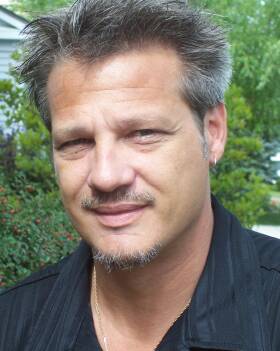
Cup of my Blood is definitely one of the most inventive horror movies of 2005, combining horror, religion and sex to striking effect. It marks the feature debut of director Lance Catania, yet he’s no novice behind the camera, having worked two decades in the commercial field – and with even more experience than that, as you’ll shortly see…
You got your first camera at the age of 9. Do you still have any of your early creations?
My Mom still has a lot of my kid-films. Big surprise, most of them were Dracula films. After I saw Night of the Living Dead, they turned to zombie films. I started listening to Black Sabbath in junior high and my films started getting really dark and serious. I would try to sync a cassette deck playing Black Sabbath and another dark band called Lucifer’s Friend, along with my increasingly surreal films. My friends started hanging around less during that period! All those years of making films taught me the basics of shooting, editing, color temperatures, special effects, how to tell a story. By the time I started film school, I had already taught myself the first three years of the program.
It’s your first feature, after a long time working in advertising. What took you so long? 🙂
Money. It’s the oldest cop-out, but it’s true. I got married the first time very young and started a family. I couldn’t just go out to L.A. and try to make it in features, I had a family to support. So, over the years I continued to network with people and write. I always write. After 20 years of commercials and corporate projects, I reached a point where I realized if I were going to make that first film, I would have to pony up the money myself. Nobody was going to just give me half a million to make it. So, I convinced my partner at X-Ray Productions, Gene Cosentino, to go ahead and use the company to make the movie.
What did you find was the biggest difference between shooting a commercial and a feature?
Creative freedom. Commercials are stacked with clients. Ad agency creative directors, writers, account people, then there are the actual clients. Once I shot a Pepsi commercial, there were 14 clients lined up along three folding tables. Everybody wants something to say about the creative process, but none want to be accountable for it. If the commercial tanks, the director takes the fall. The only person I had to answer to on my film was me. Thats one of the great advantages to making an indie film. I’m sure studio films have the same group of people “helping” make creative decisions, like on a commercial.
The basic idea came to you while you were stuck in a traffic jam. But when and why did you decide to bring in the Holy Grail?
I really didn’t have a main focus for what was in the box, so the script just sat in my head. I had a personal tragedy in my life which caused me to re-think my faith. That’s when the whole idea of the grail came to me. When thinking what could be so important in the box that people would be after it and have this whole conspiracy angle, the grail was the perfect item. Every war fought has had religion as its core.
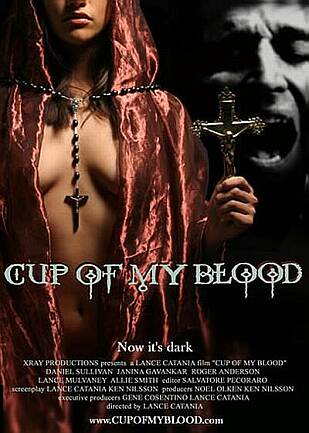
What research did you do, and what is your own religious background?
I grew up Catholic. Like a lot of people, I fell away for a while. I found things difficult to relate to in our world. When I asked questions I always got the same respose. That is the way it’s written. But no one would explain why. So, I just kept my sense of faith and went about my life. When I had that personal tragedy, I came back to that faith. I suppose I went through the typical phases. Anger, denial and acceptance. But the anger phase is when the first draft of the script came out – it was 250 pages of rage, frustration and anger. But over the next year, I kept re-writing. My anger turned into denial, and the script began to change and evolve. The denial turned to acceptance, and the script became what it is now.
I think it is a very pro-faith film. Reading the bible and studying the saints, you realize how incredibly violent the history of the Catholic faith is. I feel our film is very true to that. Men do horrible things to other men – our faith separates us. The character of Jack seems to be passive, but he always has the strength of his faith backing him up. After everyone has betrayed him, he holds strong and realizes his place and mission. Even when it demands that he commit a dreadful act on its behalf. He understands that it is his responsibility, and that it is right for him to do it.
There’s only one scene with conventional “organized religion”, when Jack tries to hand over the box. Was it a deliberate decision to all but sideline the church in the film?
In the first half dozen drafts of the script, Father Ferrin and the church were much more involved. I thought it was starting to feel very preachy and some thought it painted the church in a less favorable light. The other characters each had their own faith and religion that was explored. The whole film was starting to feel like a world religion lesson and less like a horror film. So we started stripping down: what was the core story we were telling? It’s a love story about Jack and his dead wife, and how his faith allows him to forgive himself.
Once that was fleshed out, we wanted to make sure that religion was still a major factor, but not the biggest. People are always looking for answers, to de-mystify things that defy logical explanation. If the actual grail could be found – which I’m not saying it hasn’t – it could be studied. Does it really have power? If it doesn’t, an entire faith might crumble when it finds out it is only an ancient cup that was used by a normal mortal two thousand years ago. But if it does, what does that mean for science? The big bang theory, where we come from, the meaning of life? Now things would get really crazy, and religion could become very dangerous. Ruled by superstition and a fear of things that can’t be explained, it’s in man’s nature to get the upper hand over other men. That’s why the grail’s powers are so frightening. People don’t know what they would do if they were in possession of it. They know their own temptations. They then transfer those bad or sinful temptations to others who might be in possession of it.
Do you think The Da Vinci Code helped open doors for your film?
I wrote the first draft of my script about a year before Code came out. As soon as it did, everyone would say, “Hey, it sounds like Da Vinci code.” I still have yet to read the books. I didn’t want his vision of the grail and it’s mythology to influence mine. We definitely wanted our film to come out before the Ron Howard-Tom Hanks extravaganza. I think our film is a very intimate and personal look at the whole topic and faith in general.
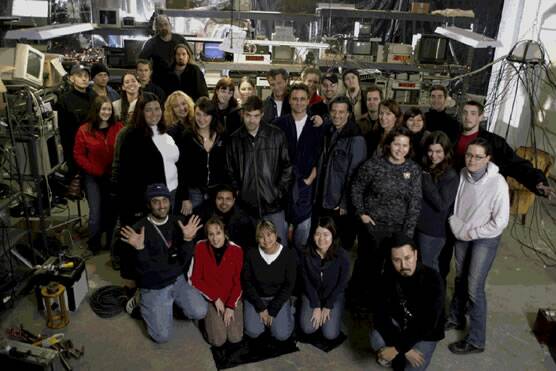
How did you find the film changed from conception to completion?
It’s pretty close in tone to what I envisioned while writing. A lot of filmakers feel if they get 75% of their vision on screen, they’re happy. I got about 95% of my vision on screen. It’s incredible. I think it is a testament to the collaboration of my producers, entire production staff and crew. I have them to thank for how the film came out. It’s dark, beautiful and meaningful.
Jack and his photographs are an important part of the movie: was that always the case, or did that aspect slot into place as the project evolved?
I was always planning on Jack being a photographer. I thought it would be an interesting extension of the idea of someone making art that is religious based, yet erotic, beautiful. Much like ancient artists created icons and art that told biblical stories. As time went and the internet blossomed, the next logical extension of erotic art was internet porn. The interesting aspect of it, though, is the whole 2nd cuming web-site. This gave me a vehicle to tie web-porn to religion with the mirror 2nd cuming/second coming web-sites. This was intriguing to me because of using technology to drive the whole idea of what Christ would come back as. Perfection. Artificial intellegence. The idea was always there, but I think that during filming, it got fleshed out more. The actors really invested themselves emotionally into their roles, inventing backstories and motivations for their actions. That totally impacted the integrity of those ideas, and made them come to life.
There’s an interesting look to the movie: what was your aim, and how did you go about achieving it?
Black and white photography has always been a passion of mine. During pre-production, we interviewed various photographers to take “Jack’s” photos. I was so busy with rehearsals and meetings, I didn’t think I would be able to devote the attention those photos required. But it was evident after looking at their work, that none of their styles matched what I wanted Jack’s photos to be. So a week before production, we brought all the actresses in for 1 day. I shot hundreds of photos in my studio. Most of them ended up in the movie. It really worked out amazingly because it gave me the opportunity to work with the actresses one by one in a very close, personal way. That allowed us to really develop their characters in a totally non-verbal fashion. We came up with their whole physical being, body language, attitudes, palette of expression. It really worked out for the best: the film would not be the same without that photo session.
What were your influences making Cup?
The biggest influence was really The Exorcist It is about faith and redemption, and is one of the best films ever made. Blackhawk Down was an influence in its visual style. Ridley Scott is a master of his visual style, painting the tone of his films. The color palette really struck a chord with me, with how it made me feel about the characters in the film. The Ring is an influence in tone. I am the biggest horror fan you’ll ever find, but I’m so tired of shitty horror movies. 99% of them are shit. Most directors have nothing to say, or are too young to have anything of merit to say. So, you go with the lowest common denominators: Sex and Blood.
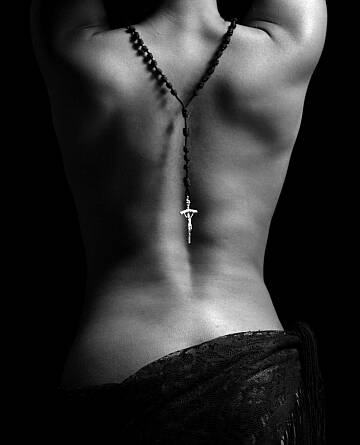
Now, I do enjoy those also, but within the context of an interesting story. The Ring was a smart film that didn’t rely on gore and teens making fun of horror films to succeed. It got back to the thing that makes a memorable film. Emotions and relationships. A mother protecting her child from evil. The films that live and endure are the ones that people can relate to on an emotional level. That’s what I admired about The Ring. It is mature and treats the audience like adults. Most horror films flooding the DVD shelves treat the audience like a 13 year old boy: fart jokes and boobies. Unfortunately, some of the fan magazines are perpetuating the trend by giving coverage to that shit, legitimizing it among the horror fans. I for one am sick to death of it. More horror fans should write them to complain.
You shot on HD video; how did that compare to shooting on film?
Having a film background really made it easy to jump into the HD world. A lot of video D.P.’s have a hard time because they only know how to light for video. Therefore their HD footage looks like video. Up until about a week before production we were still planning on shooting super 16mm film. The cost difference was biggest in post, dealing with film negative to video transfers. Thats really where we saved money. Also, the cost saved in production time was huge. With film, every time you are about to do a shot, you stop for five minutes and give the lighting one more look over and tweaks. That adds tons of time to each set up. With HD, I knew exactly what I was getting without taking that extra time. Most of the time I would just light to my eye and not bother with the monitor.
The most important difference was my ability to really work the actors. With film, every time you want to give a little direction to the actors, you need to cut. The film is so expensive, you simply cannot keep rolling. So, then you talk to the actors, call for sound to roll, then camera to roll, then action. By the time you are rolling again, you’ve lost the moment with the actors. It’s very distracting. Because the HD tape was cheaper than film, I was able to keep rolling, whisper directions to the actors and keep right on going. That really helped the actors stay in the moment, take the directions and move on. That was one of the main reasons we’ve got such brilliant performances. The only problem was my editor, Salvatore Pecoraro, was really pissed because we ended up with 40 hours of footage for him to go through!
There’s an interesting look to the movie: what was your aim, and how did you go about achieving it?
I wanted the film to feel dark and heavy, like there is a physical and emotional weight to it. Even the daytime exterior scenes, I wanted to feel dark. Along with the quality of light, the color palette was important. We used greens, ambers and earth tones in everything. Art direction, wardrobe, even the blood recipes were designed with this palette in mind. I spent two days before shooting with my HD Tech, Marco, and set up the look of the camera. We had two looks: daytime and night time. For day, we wanted a cold, greenish-blueish cast to it. It really conveyed the feeling of societal and spiritual decay. Then, because it was so urban, the night has an amber cast. This looks like the ambient light caused by that those creepy sodium vapor street lights, rather than blue moon light.
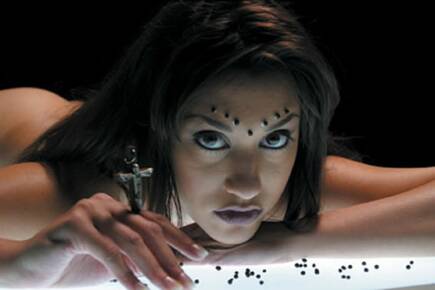
What strategy was there for the music, and the sound design in general?
In terms of music, I’ve always imagined this as a very urban film. Even though I love the classic gothic kind of string-based scores for horror films, it just didn’t seem to fit conceptually with the film. During the three years I was writing and rewriting, I always listened to the same CD: the Twin Peaks soundtrack. The quirky free-form jazz sound really struck a chord with me – it felt urban and kind of gritty and underground, made me feel the vibe while I was writing. The Sparky and Limpy characters really evolved from listening to that music, so much so that while Robert Mcnaughton was composing, I really wanted Sparky’s theme to feel very “Twin Peaksian”. He captured it beautifully. Sound is amazingly important to a horror film, and the sound design the guys did was incredible, very deep and intricate – at some points there were up to 40 tracks of subtle things going on.
Did you have a clear idea of the characters in your mind when writing the script, or did the actors who auditioned bring unexpected angles to their roles?
Yes, I always had very specific images of the charactes in my head while writing. When we began auditioning, we threw all that away and just looked for the best actors. Some of the roles were written for very different types they ended up being. In the case of Scooter, that part was written for a twenty something computer geek. Quianna came in and was so brilliant, we re-wrote that role, along with Nibbles, to include much more intersting qualities than originally existed. The movie got a lot better after we cast it. Most roles were re-written for the actors. They made it come to life.
How long was the shoot? Did filming in Chicago in winter pose any special problems?
We shot 16 days. Then I did two days of pick up establishing shots. The whole shoot was gloomy and 40 degrees. Perfect for the tone of the film. We were so lucky to have that. Then the day we were to shoot the car crash scene, it snowed four inches. Great, what do we do now? Keep shooting. The snow was gone the next day, but in afterthought, helped the mood of the film. The night we shot the alley scene where Memoli gets gutted, it was hour 17 and started to rain. We got two takes before the crew gave me the, “we’re gonna kill you in five minutes” look. Chicago is totally unpredictable. The saying goes, “If you don’t like the weather in Chicago, wait five minutes.” The problem was the pick up days. The day we wrapped, the weather broke. It got sunny and nice. I couldn’t do the establishing shots because the didn’t fit visually in tone. I had to wait two weeks. Monday morning, I came to work and it was gloomy and foggy. Whoo hooo! I grabbed the camera and ran out. It was worth the wait. Those are some of my favorite shots in the movie.
On the DVD, you say that the discovery of the pool location led to script changes to make use of it. Did this happen in any other ways?
The fact that Janina was Indian and Daniela, her lover, being German led to an interesting change. During the final love-making scene, we thought it would be cool that both women speak their native tongues, yet understand each other. It helped create an other-worldliness to their relationship. So, we re-wrote that scene to include Janina speaking Hindi and Daniela speaking German.
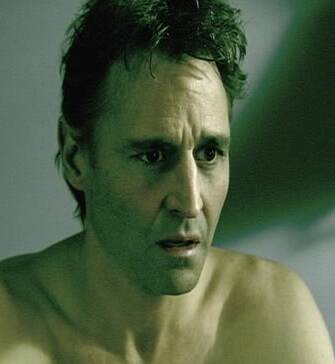
The original cut of the film was 2 1/2 hours long. How do you go about taking 45 minutes out, while leaving the content and atmosphere intact? Was there anything you were particularly reluctant to remove, but that had, in the end, to go?
It was brutal. That whole 1 page per minute is bullshit. If it were true, I’d have a 99 minute film. I had to make huge cuts. In fact an entire character was cut out of the film. The footage exists on the DVD, which is totally cool. People can see an awesome performance from Gary Sugarman that was deleted from the movie. At first I tried to make lots of little cuts, but it wasn’t even close. I was still at 2 hours and 15 minutes. So, we made the decision to cut the “George” character [the caretaker of the health-club where Jack swims]. In hindsight, it was really the best decision. His performance was awesome, but as the story and tone came together, his character kind of stood out as odd. It didn’t fit the feel of the rest of the film anymore. Lots of other stuff too. Much more with Nibbles and Scooter. I love that footage. The acting is brilliant. But, again, the pace was slowed down by it. I’ve taken criticism about the pace already being slow.
These days, it often seems harder to find distribution for a movie than to make one. Was that the case for Cup?
That is totally the case. We were lucky to hook up with Susan Jackson, the Executive Producer from Cabin Fever. She saw our trailer and said she wanted to be part of it. She set up the deals with our domestic distributor MTI, and our foreign distributor Shoreline Entertainment.
There is a tremendous surplus of horror films. Every idiot with a DV camera and a gallon of blood is a horror director. Some of the major distributors looked at our film, but said, “we already have 15 horror films on our plate, we don’t need another one.” But that goes back to what I said about the horror business in general. It sucks. Yeah, they have 15 horror films, but 14 of them are shit. As long as they have some crap in a colorful cover to slap up on the DVD shelves. Horror is always in, but good horror lasts. The future is in the “micro-distributors”. Small companies who have edgy product and market on the web and fan-zines. They can keep marketing costs down and keep the product available to the people who want it, for a reasonable price.
How has the reaction been to the movie?
Surprisingly, I really haven’t gotten much of a reaction from religious people; mostly the reviewers and fan sites comment about how blasphemous it it, maybe one or two really recognized how “pro-faith” the film is meant to be. I wasn’t interested in making it a “holy-roller” film, but at the same time religion always gets beaten up, so I wanted it to have a true feeling about religion. Religious history is wraught with violence, I think our film honestly portrays that without exploiting it.
The violence is meant to be unpleasant and realistic: quick, ugly, traumatic, not glamourizing it. Jack has buried his faith because of what happened to Tina, but it was always there, and it was all a test to see if his faith was strong enough. While rehearsing with Dan and Allie, we worked out this whole backstory of Tina’s affliction and how she felt that she was blessed to have it, because in her heart she knew Jack was meant for something great and she had to sacrifice herself in order for it to be seen through.
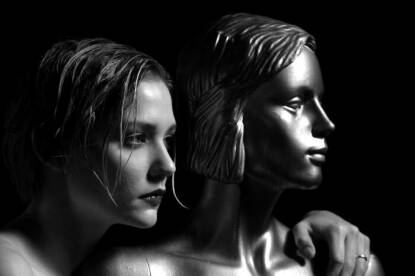
What lessons did you learn from this film? And looking back at it, would you have done anything differently?
I’m fortunate. Things worked out for the film, but we took a lot of precautions. The biggest reason our film worked was because we spent 3 months of preproduction. That gave us time to work out all of our logistics and more importantly rehearse with actors. We spent three weeks working with the actors. We had all the emotional arcs of all the characters and the blocking worked out ahead of time. By the time we hit the set, we were 90% there with performances. That was everything. When you don’t have money, your greatest resource is time.
You’re clearly a big horror fan, but do you intend to stay within the genre, or are you planning other avenues for future works?
We have optioned the rights to the Edward Lee novel, Messenger. I just finished the screenplay and am beginning pre-production. It’s a totally out of control, balls-out horror film. Very extreme, very controversial. We will need to have an unrated cut of them film. Lee is a master of horrific situations and imagery: his novels are haunting in their violent excess and sense of dread. We see the world very much alike.
Then, we have a film noir style thriller entitled, Call Back, that we are also beginning pre-pro on. I’ve begun writing a pilot script for a supernatural thriller TV show. I can’t say too much about it yet, but it will definitely push the envelope of what you can do on TV. It would be an awesome Sci-Fi Channel show. Or, if we are able to make it more extreme, it could really work as a Showtime or HBO show. We are already in talks with a major distribution company for it. I have a true crime project that is in development and a love story. Believe it or not. It will be a timeless love story, but told my way. Totally different. It’ll be the only, “love story/chick-flick”, that the guys are gonna dig too. I’m very excited by it.
What do you want audiences to get from Cup of My Blood?
I hope people will see the film and really think about it. I want it to stick with them, make them think about what frightens them. Not a cat jumping out of a closet kind of scare, but what scares their soul. There are many layers to the film. It’s not a “guy with a knife chasing co-eds around” kind of movie. I wanted to create a mood that was deeper than that. Questions of faith. How much do you love your spouse? Enough to help them kill themselves, risk spiritual suicide? Also, I hope they get the crap scared out of them. Especially regarding locker room showers.
[Thanks to Lance Catania for his time, enthusiasm and pics; all photos are copyright Lance Catania. Thanks also to Ed Baran for his help setting up the interview. The website for Lance’s company, X-Ray Productions, can be found here, and there’s also the film’s site too.]